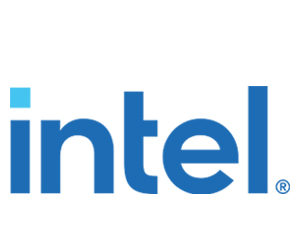Computer Science Education Gets Back on Track
One year into the pandemic, Aberdeen students are back in their classrooms part time, using a hybrid learning model. According to district leaders, the endeavor to expand computer science is gradually getting back on track as part of a broader, districtwide effort to shrink the digital equity gap.
Because the JROTC program has the flexibility to incorporate more computer science and cybersecurity-related instruction mixed in with the regular curriculum, Williams says, his program serves as a test bed for the school district to explore how certain activities could inspire students and prepare them for college and careers that may have initially felt out of their comfort zone.
“I tell my students to look for those opportunities where you can invest in yourself in high school and put yourself on a pathway to a career that, growing up here in rural Mississippi, you may never have even considered,” he says.
LEARN MORE: School districts share how they successfully navigated hybrid learning.
Planting Seeds for Successful STEM Careers
Aberdeen’s 1,063 students are mostly Black, and a majority are considered economically disadvantaged, according to state education department data. Roughly 81 percent of students graduated from Aberdeen High School in 2019-2020, a slightly lower rate than the statewide average (85 percent).
Through programs like CyberStart, a cybersecurity simulation program that immerses teens in real-world scenarios and challenges them to solve problems, the 42 cadets — 80 percent of whom are female — are exploring science, technology, engineering and math careers. They’re also participating in CyberPatriot, a national youth cyber education program that the Air Force Association created so students can train with Air Force representatives using flight simulators.
Williams, a native Mississippian who spent three years of his Air Force career teaching ROTC at Tuskegee University, a historically black land-grant university one state over in Alabama, knows from personal experience how critical it is to expose students from low-income backgrounds to an array of activities and possible career paths. Absent these opportunities, he says, a student’s perspective on what they are capable of can be limited.
Indeed, when he talks to his students about the growing demand for tech-savvy workers such as cybersecurity experts at companies that pay starting salaries of $50,000 to $60,000, they are often surprised and curious.
DISCOVER: These 4 tips enhance STEM engagement in a hybrid classroom.
Closing the Gender Gap in STEM
Women are underrepresented in professional computer science occupations in the U.S., and this disparity is also reflected among students who take Advanced Placement computer science exams. While 56 percent of all AP test-takers in 2019 were girls, only 29 percent of AP computer science test-takers in 2019 were girls, according to data compiled by the National Center for Women & Information Technology.
“Closing the gender gap isn’t up to the students alone. It’s up to us — to change our behaviors, strategies and systems so that these classes and careers reflect the diversity in our communities,” says NCWIT Senior Research Scientist Brad McLain.
Changing the systems that contribute to a lack of representation for women, as well as for Black and Hispanic individuals, in computing fields requires, among other things, upgrading school IT systems to support more widespread and rigorous computer science instruction. The quick pivot to remote instruction last year has led districts around the country to make long-delayed IT upgrades and invest in Wi-Fi hotspots for students who don’t have reliable internet access at home.
RELATED: How can technology in the classroom promote equity?
The Trajectory of CSforAll in Aberdeen Post-Pandemic
Before the pandemic, Aberdeen was not a one-to-one device district, and many students lost technology access when schools shut down last year. To address that issue, the district purchased Chromebooks for all students, though it took months to get one into every student’s hands, Williams says, as the products were back-ordered due to the spike in demand when schools shut down.
As in other districts, some students in Aberdeen did not have reliable internet access at home, either due to affordability or because they lived far from cell towers. Purchasing hotspots for those families has helped.
The CSforAll program supported virtual training for two teachers (who had previously taught other subjects) to become certified as computer science instructors over the summer, and the high school began offering AP computer science classes in fall 2020. Williams plans to get certified this summer.
And in January, the JROTC program received 25 Dell Latitude 3410 laptops from CDW•G for cadet use, which was supported with a grant Williams applied for through The Intel Online Learning Initiative: Creating Connections.* The machines have Intel processors, 500-gigabyte hard drives and run on Microsoft Windows 10 Pro, according to Dorothy Frembgen, the district’s technology director.













